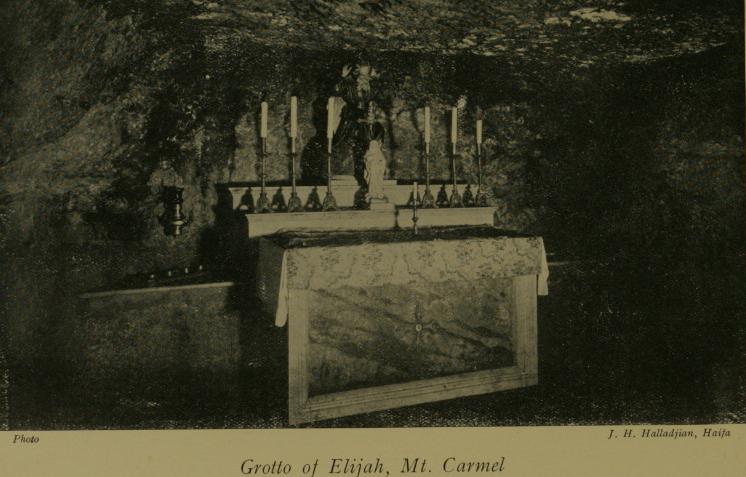Elijah’s Cave

The Elijah’s Cave is a grotto written about in the Hebrew Bible, where the prophet Elijah took shelter during a journey into the wilderness (1 Kings 19:8).
In the Books of Kings Elijah had been travelling for 40 days and nights, when he takes shelter in the cave on Mount Horeb for the night. Upon awakening he is talked to by God.
In mainstream Jewish, Christian, and Islamic thought, Elijah is indelibly associated with the mountain, and he is regarded as having sometimes resided in a grotto (Elijah’s Cave) on the mountain. Indeed, one name for Mount Carmel is جبل مار إلياس (Jabal Mar Elyas; Mount Saint Elias). In the Books of Kings, Elijah challenges 450 prophets of a particular Baal to a contest at the altar on Mount Carmel to determine whose deity was genuinely in control of the Kingdom of Israel; since the narrative is set during the rule of Ahab and his association with the Phoenicians, biblical scholars suspect that the Baal in question was probably Melqart.
According to the Bible in 1 Kings 18, the challenge was to see which deity could light a sacrifice by fire. After the prophets of Baal had failed to achieve this, Elijah had water poured on his sacrifice to saturate the altar and then he prayed; fire fell and consumed the sacrifice, wood, stones, soil, and water which prompted the Israelite witnesses to proclaim, “The LORD, He is God! The LORD, He is God!”. In the account, Elijah announced the end to a long drought; clouds gathered, the sky turned black, and it rained heavily.
Though there is no biblical reason to assume that the account of Elijah’s victory refers to any particular part of Mount Carmel, Islamic tradition places it at a point known as El-Maharrakah, meaning the burning.
Two places have been appointed as possible site for the story about the battle against the priests of Baal. The slaughter could have taken place near the river Kishon, at the mountain base, in an amphitheater-like flat area. The site where the offering took place is traditionally placed on the mountain above Yokneam, on the road to the Druze village of Daliyat del-Karmil, where there is a monastery built in 1868 called El-Muhraqa (“the Sacrifice”).
Although archeological clues are absent, it has a point in its favor because it has a spring, from which water could have been drawn to wet Elijah’s offering, and secondly there is a sea view, where Elijah looked out to see the cloud announcing rain. On the other hand, in the Bible text it says that Elijah had to climb up to see the sea. There is an altar in the monastery which is claimed to be the one that Elijah built up in God’s honor, but that is unlikely as it’s not made of the local limestone.
Source : wikipedia
https://www.youtube.com/watch?v=glcitFc6NBo
https://www.youtube.com/watch?v=v9_n51MIVy0
https://www.youtube.com/watch?v=aqGWRuo_0nU
Reviews
https://goo.gl/AnZczb


Rate this article